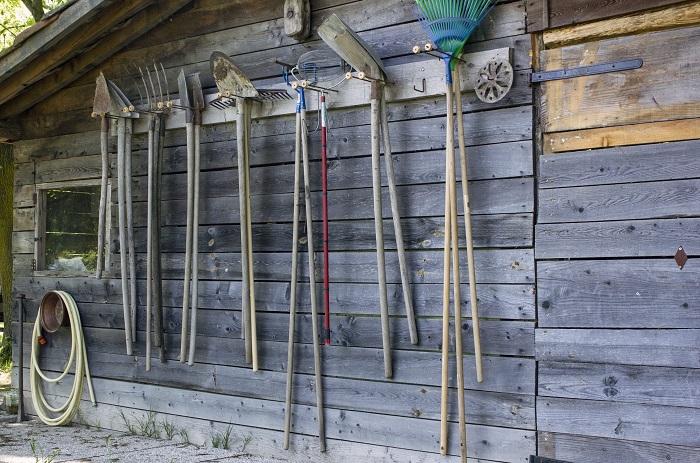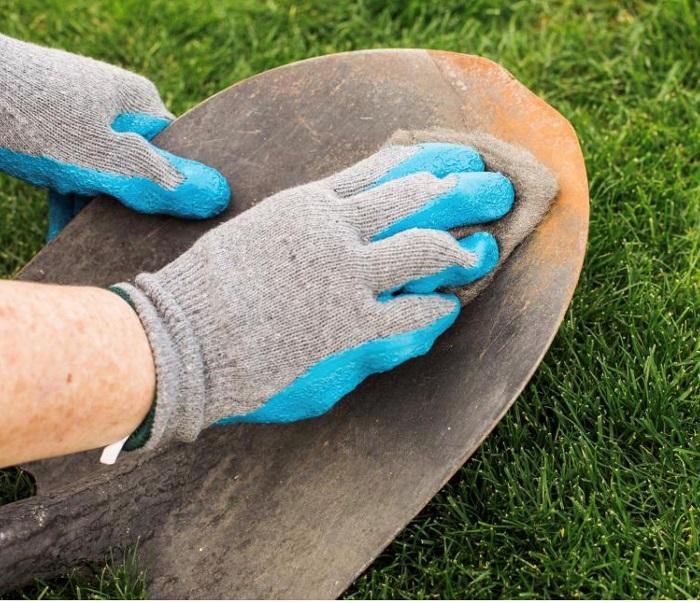
Garden Tool Maintenance
Chefs consistently maintain and sharpen their knives to work more quickly, cut more cleanly, prevent injury to hands and fingers and to last longer. The same is true for garden tools.
Sharp garden tools make better cuts on foliage which allows the plant tissue to heal properly. Smoother cuts on foliage means less torque on your hands, wrists, and arms. Clean tools help to prevent the transmission of plant diseases. Maintained tools will last longer and are safer to use when they operate easily. Good maintenance protects your investment in your tools.
The three S’s of maintaining garden tools are scrub, sharpen, and sanitize, then lubricate. As you perform these steps, check for missing or broken parts, check the attachment points of tool heads, and tighten if they are loose. Be careful not to overtighten to prevent cracking the tool head. Inspect the handles to ensure they are secure and splinter free.
Scrub: Hand tools such as weeders, pruning shears, spades, rakes, saws should first be thoroughly scrubbed of grit and debris, then dried. Scrub with soap, water, and a gentle scrubbing pad.
Sharpen: To sharpen flat blades, use a flat edged file, a sharpening stone, or a flat mill bastard file. Using a vise to hold the tool will make the sharpening easier and safer. Take tools with serrated edges, such as a pruning saw, to a professional for sharpening.
Sanitize: To sanitize, use alcohol wipes or spray with Lysol ®. The active ingredients in Lysol ® are less corrosive to metal than a bleach solution.
Lubricate: Lubricate any blades or metal parts with a non-toxic oil to protect them from rust. You can oil smaller hand tools by using an “oil sock”. Stuff a sock with sand or wadded rags. Tie a knot and apply vegetable oil. Vegetable oil is less toxic to the garden than a crude oil. Rub the sock along your tool to apply the oil. Store the sock in a zip-lock plastic bag.
Finally, inspect wood handles and replace them if they are broken or cracked. To condition wood handles and prevent cracking on tools like spades, forks and picks, lightly sand them with medium grit sandpaper and use a drying oil like boiled linseed oil. For a thorough treatment, apply it liberally, allow it to sit 15 minutes and wipe off the excess with a dry cloth. Read and follow linseed oil usage directions carefully, as used rags can pose a combustion risk if stored or disposed of incorrectly. Be sure to wear gloves to protect your hands. Nitrile-coated gloves provide great defense against oils and can be hand-washed or tossed in the washer and line-dried.

Tools that have engines such as gas trimmers, chainsaws, mowers take more time to winterize. Begin by cleaning the tool of dirt and dust. Drain the fuel then idle the tool for a short time to ensure the tank is dry. Drain the used engine oil and fill with fresh oil so that the engine does not remain dry for the winter. Please dispose fuel and oil according to local ordinances. Unscrew spark plugs, clean soot, and put back in place so debris does not enter the combustion chamber. Check all filters and replace if needed. Ideally store the tool hanging on a wall or sturdy shelf.
If your tools are electric, remove the battery, clean the terminals with a baking soda paste and brush and recharge the battery.
This is also a good time to check your garden hoses for leaks, or couplings which may need new washers. Your wheelbarrow may need air in the tires, new handles, or both.
Now that your tools have been maintained, you can look forward to getting a jump start on your spring garden with like-new tools.








